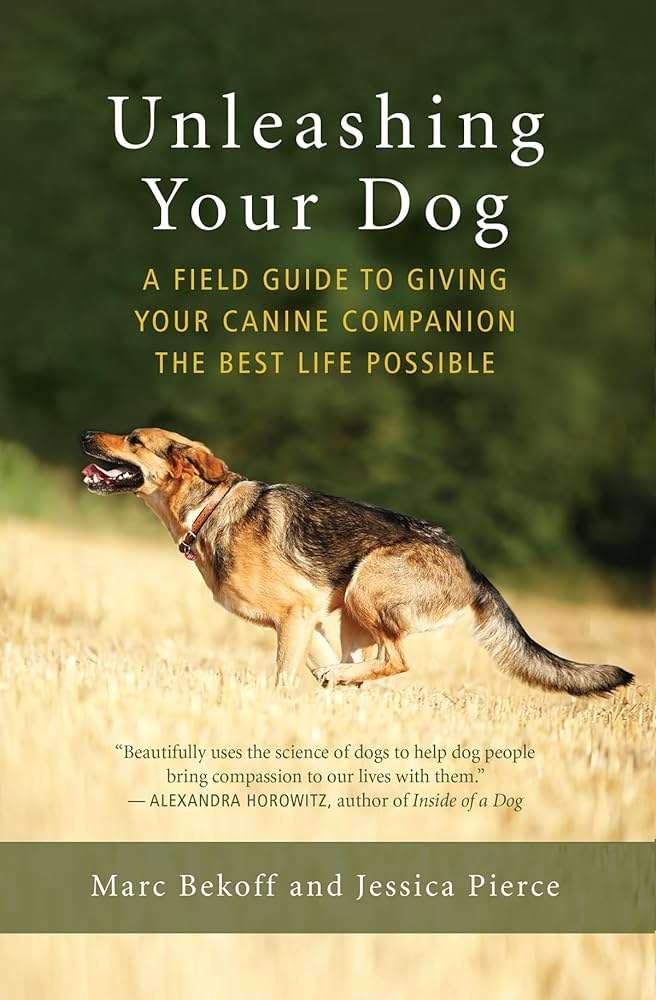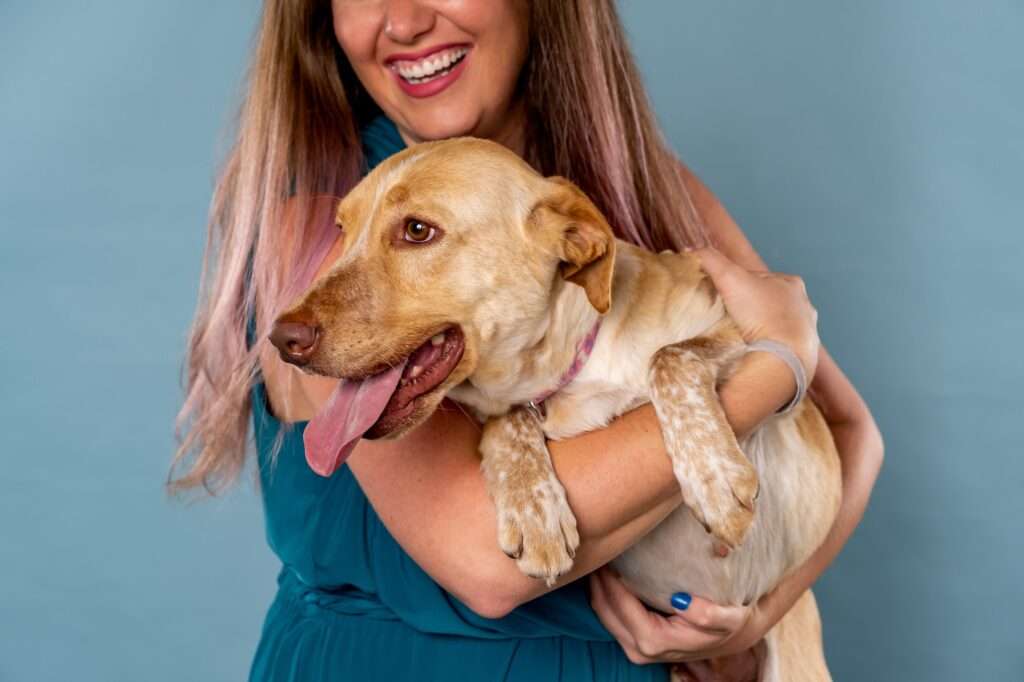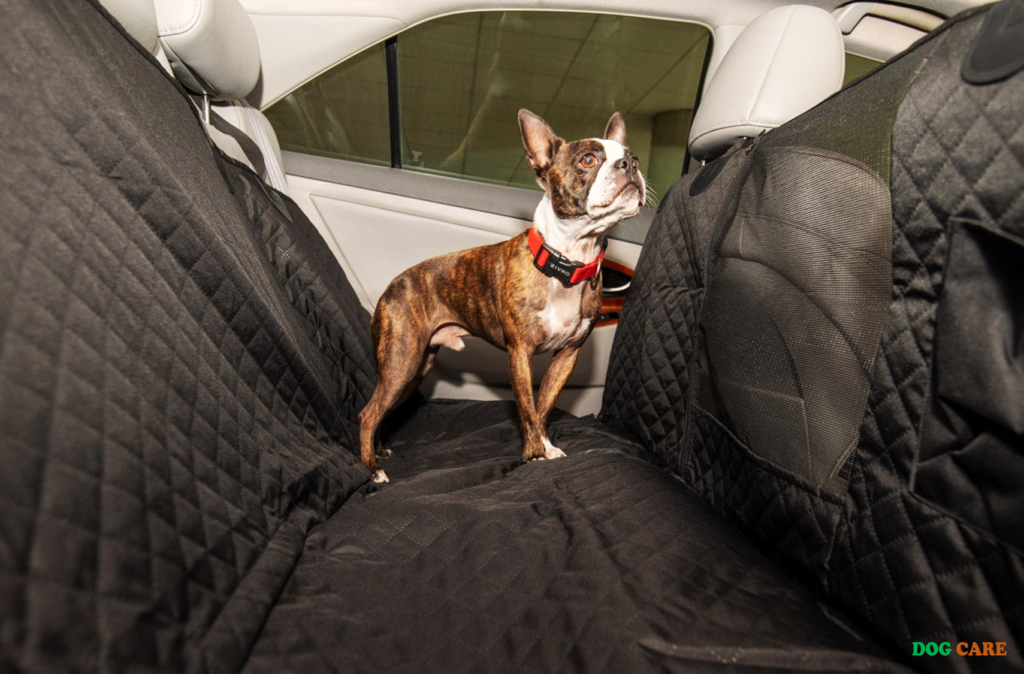How Can I Take Care of My Dogs Hair at Home : To take care of your dog’s hair at home, regularly brush their coat and bathe them as needed. Use a proper grooming routine to keep their hair healthy and clean.
Proper hair care is essential for your dog’s overall health and well-being. Regular brushing helps to remove loose hair, prevents matting, and distributes natural oils, while bathing helps keep their coat clean and free of dirt and parasites. Additionally, regular trimming of their hair and nails is important to prevent overgrowth and potential health issues. ( How Can I Take Care of My Dogs Hair at Home )
Using high-quality grooming tools and products suitable for your dog’s specific coat type is crucial for maintaining their hair at home. With the right care and attention, you can keep your dog’s hair healthy, shiny, and free of tangles, ensuring they look and feel their best.

Understanding Your Dog’s Coat Type
Understanding Your Dog’s Coat Type is essential in order to provide proper grooming and maintenance for your furry friend. Each dog has a unique coat type that requires specific care, grooming techniques, and maintenance. By identifying and understanding your dog’s coat type, you can tailor your grooming routine to ensure their coat remains healthy and lustrous.
Identifying Different Coat Types
When it comes to understanding your dog’s coat type, it’s crucial to identify whether your dog has a double coat, curly coat, wire coat, or a smooth coat. Each coat type requires different grooming techniques and care, making it essential to know your dog’s specific coat type.
Tailoring Grooming Techniques To Coat Type
Once you’ve identified your dog’s coat type, it’s important to tailor your grooming techniques accordingly. For example, a dog with a double coat may require regular brushing and shedding treatments to maintain a healthy coat. On the other hand, a dog with a curly coat may require specialized detangling and moisturizing products to prevent matting and dryness.
Importance Of Regular Brushing
Regular brushing is crucial for maintaining your dog’s coat, regardless of their specific coat type. Brushing helps to remove loose hair, prevent matting, distribute natural oils, and promote healthy skin and coat. By incorporating regular brushing into your dog’s grooming routine, you can effectively reduce shedding, prevent tangles, and keep their coat looking and feeling its best.
Essential Grooming Tools
Keeping your dog’s hair well-maintained is an essential part of responsible pet ownership. With the right grooming tools and a little know-how, you can easily take care of your dog’s hair at home. Here are the essential grooming tools you’ll need to keep your furry friend looking and feeling their best.
Brushes And Combs
Brushes and combs are crucial for maintaining your dog’s coat and preventing matting and tangles. Different types of brushes are suitable for various coat types, including slicker brushes for removing loose fur, bristle brushes for smoothing and adding shine, and undercoat rakes for double-coated breeds.
Clippers And Scissors
Clippers and scissors are necessary for trimming your dog’s hair, especially if you have a breed with continuously growing hair. Clippers are ideal for creating a uniform length, while scissors are essential for precision trimming around the face, ears, and paws.
Shampoos And Conditioners
Using shampoos and conditioners designed for dogs is essential for maintaining a healthy coat. Look for products that are specially formulated for your dog’s specific needs, whether it’s sensitive skin, shedding control, or coat brightening. Regular baths with the right products will help keep your dog’s hair clean and moisturized.
Preparing Your Dog For Grooming
Prepare your dog for grooming by regularly brushing its hair at home to maintain its coat. Use appropriate tools and techniques to prevent mats and tangles, ensuring a comfortable grooming experience for your pet. Consistent care at home will keep your dog’s hair healthy and manageable.
Creating A Calm Environment
Before starting the grooming process, create a calm environment to help your dog feel relaxed and comfortable. Choose a quiet and well-lit area free from distractions. This can be a dedicated grooming space in your home or any area where your dog feels most at ease. Removing any loud noises or sudden movements can also help to create a tranquil setting.
Brushing And Detangling
Brushing and detangling your dog’s hair is a crucial first step in the grooming process. Use a high-quality brush or comb specifically designed for your dog’s coat type to prevent mats and tangles. Start from the top of the head and work your way down, gently untangling any knots while being mindful of your dog’s comfort at all times. Regular brushing not only keeps your dog’s coat looking great but also minimizes shedding and promotes healthy skin.
Bathing And Drying Techniques
Keeping your dog’s coat clean and well-maintained is essential for their overall health and happiness. Bathing and drying your furry friend properly can help prevent skin issues and keep their coat looking shiny and healthy. Here are some techniques to ensure your dog’s coat stays in top condition.
Choosing The Right Shampoo
Choosing the right shampoo is crucial for keeping your dog’s coat clean without stripping it of essential oils. Select a gentle, dog-specific shampoo that matches your dog’s coat type, whether it’s for long-haired, short-haired, curly, or sensitive skin breeds. Avoid using human shampoos as they may contain harsh ingredients that can irritate your dog’s skin.
Drying Techniques For Different Coat Types
Proper drying is important to prevent matting and tangling, as well as to ensure your dog doesn’t get chilled. Different coat types require varying drying techniques:
- Short-haired breeds: Use a towel to gently pat your dog dry, followed by air-drying or a brief blow-dry on a low setting.
- Long-haired or double-coated breeds: Use a high-velocity dryer or a slicker brush to blow-dry the coat, working in the direction of hair growth to prevent tangles and mats.
- Curly-coated breeds: Use a diffuser attachment on a low-heat setting to avoid frizz and maintain the curl pattern.
Regardless of the coat type, always ensure that your dog is completely dry, especially in cooler weather, to prevent skin issues and discomfort.
Trimming And Styling
Keeping your dog’s hair well-groomed is essential for their overall health and appearance. Trimming and styling, when done properly and with the right techniques, can help your dog look and feel their best. Here are some tips and techniques for safe trimming and stylish grooming for your furry friends.
Tips For Safe Trimming
- Invest in Quality Tools: Use sharp, high-quality scissors or clippers designed specifically for pet grooming to avoid tugging or pulling your dog’s hair.
- Start Slowly: If your dog is not used to being groomed, introduce them to the tools gradually to build trust and minimize anxiety.
- Consider Professional Training: If you’re new to grooming, consider seeking professional training to learn safe and effective techniques for trimming and styling your dog’s hair at home.
- Be Mindful of Sensitive Areas: Extreme care should be taken around sensitive areas such as the ears, paws, and face to avoid accidental cuts or injury.
- Seek Regular Trims: Regular trims, rather than significant cutting all at once, will keep your dog’s hair healthy and manageable.
Styling Techniques For Different Breeds
Every breed has unique hair types and grooming needs. Understanding the specific styling techniques for different breeds will enable you to groom your dog in a way that complements their natural appearance and maintains their overall health.
| Breed | Styling Technique |
|---|---|
| Long-haired Breeds (e.g. Shih Tzu, Maltese) | Gentle brushing and regular trims to prevent matting and maintain a healthy coat. |
| Curly-coated Breeds (e.g. Poodle, Bichon Frise) | Professional grooming every 4-6 weeks and regular brushing to avoid matting. |
| Short-haired Breeds (e.g. Boxer, Dalmatian) | Regular brushing to minimize shedding and promote a healthy coat. |
Importance Of Nutrition
Diet plays a vital role in maintaining the overall health of your dog, including the condition of its coat. Proper nutrition not only contributes to your dog’s well-being but also affects the health and appearance of its hair. In this section, we will delve into the impact of diet on coat health and the recommended nutrients for healthy skin and coat to help you take care of your dog’s hair at home effectively.
Impact Of Diet On Coat Health
The quality of your dog’s coat is closely linked to its diet. An inadequate diet can lead to dry, brittle hair, excessive shedding, and skin issues. On the other hand, a balanced and nutritious diet can contribute to a shiny, healthy coat. The key nutrients found in your dog’s food directly influence the condition of its coat, making it essential to pay attention to its diet for optimal hair health.
Recommended Nutrients For Healthy Skin And Coat
For a lustrous coat and healthy skin, your dog’s diet should be rich in essential nutrients. Incorporate the following key nutrients into your dog’s diet to promote healthy skin and coat:
- Protein: Essential for hair growth and strength.
- Omega-3 and Omega-6 Fatty Acids: Support skin health and maintain a shiny coat.
- Vitamins A and E: Promote skin cell turnover and overall skin health.
- Biotin: Aids in the maintenance of a healthy coat and skin.
By ensuring that your dog’s diet contains the recommended nutrients, you can significantly enhance the condition of its coat and skin, ultimately contributing to its overall well-being.
Skin And Coat Health Checks
Ensuring the health and well-being of your dog’s skin and coat is an essential aspect of at-home grooming. Regular skin and coat health checks can help identify any issues early and maintain your dog’s overall health. By incorporating simple practices into your regular grooming routine, you can effectively manage shedding and dandruff, as well as detect and address potential skin issues. Here are some key tips to help you take care of your dog’s hair at home.
Identifying Skin Issues
Regularly inspecting your dog’s skin can help detect any abnormalities early on. Look for signs of redness, irritation, lumps, or rashes. Additionally, check for any dry, flaky, or scaly patches, as these could indicate skin issues such as dermatitis or allergies. Keeping an eye out for any changes in your dog’s skin condition can aid in identifying potential health concerns promptly.
Managing Shedding And Dandruff
Shedding and dandruff are common concerns for dog owners. Regular grooming, including brushing and bathing, can help manage these issues. Brushing your dog’s coat helps remove loose fur and distributes natural oils, promoting a healthy coat and reducing shedding. Use a suitable dog shampoo and conditioner to maintain a clean and moisturized coat, which can help minimize dandruff and promote skin health.
Grooming Sensitive Areas
Grooming your dog’s sensitive areas at home is a vital part of their overall care routine to keep them happy and healthy. By paying special attention to areas such as ears, paws, and facial hair, you can ensure your furry friend is comfortable and well-groomed. Here’s how to safely and effectively groom these sensitive areas at home.
Safe Ear And Paw Grooming
When it comes to grooming your dog’s ears and paws, it’s essential to use care and caution to avoid injuring these delicate areas. Begin by inspecting your dog’s ears for any signs of redness, irritation, or excessive wax buildup. Using a gentle dog-specific ear cleaner and cotton balls, carefully clean the visible part of the ear, taking care not to insert anything into the ear canal.
For paw grooming, start by trimming the hair between the paw pads using blunt-edged scissors to prevent matting and discomfort. Be sure to examine the paws for any cuts, foreign objects, or signs of infection that may require attention from a veterinarian.
Eye And Facial Hair Maintenance
Regular maintenance of your dog’s facial hair and eye area is crucial for their comfort and hygiene. Use a pair of blunt-nose grooming scissors to carefully trim any long hair around the eyes, taking care not to injure your pet. Pay special attention to the area beneath the eyes to prevent irritation and tear staining.
Additionally, gentle wipe the eye area with a damp cloth to remove any discharge or debris to avoid potential eye infections. Be cautious not to touch the eyeball directly, and for any signs of redness, irritation, or discharge from the eyes, seek guidance from a veterinarian.
Understanding When To Seek Professional Help
When it comes to taking care of your dog’s hair at home, it’s essential to know when to seek professional help. Pay attention to any signs of skin issues or matting that may require expertise beyond your grooming abilities. Seeking professional help for advanced grooming needs can ensure your dog’s coat stays healthy and well-maintained.
Understanding When to Seek Professional Help When it comes to taking care of your dog’s hair at home, it is vital to know when professional help is necessary. While regular at-home grooming can contribute to your dog’s well-being, certain signs and situations may indicate the need for professional intervention. Understanding these indications will ensure that your furry friend receives the best care when it is needed the most. Signs of Skin or Coat Issues Skin and coat problems can have various signs that indicate the need for professional assistance. Pay attention to the following indicators: 1. Excessive shedding or hair loss 2. Persistent itching, licking, or biting of the skin 3. Presence of lumps, bumps, or rashes on the skin 4. Foul odor emanating from the coat 5. Abnormal changes in the color or texture of the coat If any of these signs are observed, it is crucial to seek the expertise of a professional groomer or veterinarian to address any underlying skin or coat issues. Benefits of Professional Grooming Services Professional grooming services offer several benefits that can enhance the health and appearance of your dog’s coat. These include: 1. Expertise in identifying and addressing skin and coat issues 2. Proper knowledge and equipment for handling specific grooming needs 3. Regular maintenance and monitoring of your dog’s coat health 4. Access to specialized treatments such as medicated baths or skin condition management By understanding the signs that warrant professional help and recognizing the benefits of professional grooming services, you can ensure that your dog receives the best care for their coat and skin health. Remember, if you notice any concerning signs, do not hesitate to seek professional assistance to keep your furry companion happy, healthy, and looking their best.
Frequently Asked Questions Of How Can I Take Care Of My Dogs Hair At Home
How Often Should I Brush My Dog’s Hair At Home?
Regular brushing is vital to prevent matting and tangles. Aim for at least 2-3 times a week for long-haired breeds and once a week for short-haired breeds. This routine helps in maintaining a healthy coat and reduces shedding.
What Type Of Brush Should I Use For My Dog’s Hair At Home?
Choose a brush based on your dog’s coat type. Slicker brushes work well for long-haired breeds, while rubber brushes are suitable for short-haired breeds. Consult with a professional groomer for personalized recommendations.
How Can I Bathe My Dog At Home Without Stressing Them Out?
Start by brushing your dog to remove any tangles, then use a gentle, dog-specific shampoo and warm water. Ensure the bathing area is secure and provide treats to create positive associations with bath time. Gradually introduce your dog to the process to alleviate stress.
Conclusion
In all, taking care of your dog’s hair at home requires consistency and patience. Dedicate time for grooming practices to keep your dog’s hair healthy and tangle-free. Proper bathing, brushing, and trimming are key for maintaining a shiny coat and preventing matting.
By following these simple steps, you can ensure your furry friend’s hair stays in tip-top shape, promoting their overall well-being.
How Can I Take Care of My Dogs Hair at Home


